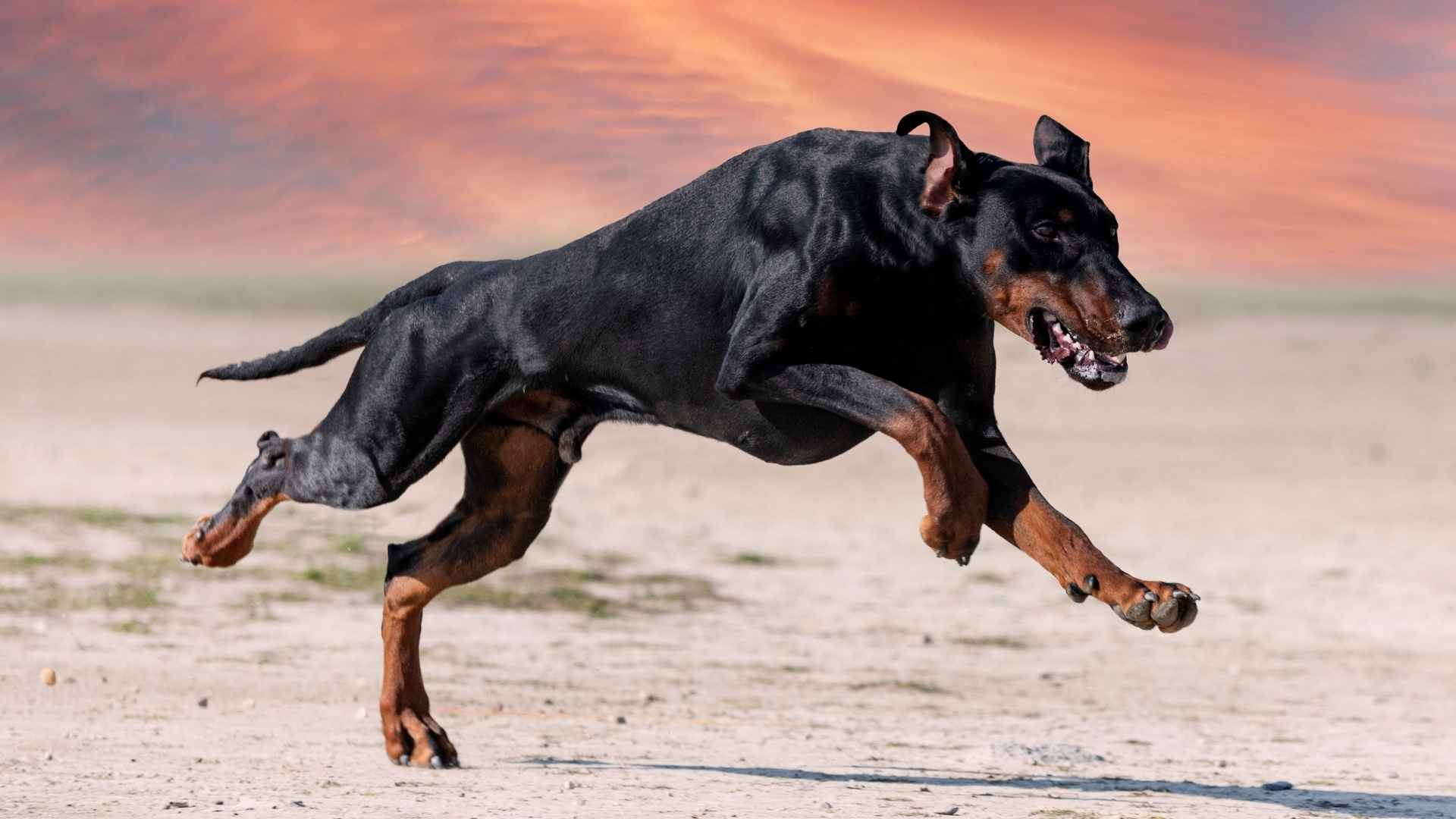Courage isn’t just a human trait—it’s alive and well in our four-legged friends. According to Scientific American, a landmark genetic study found that while breed accounts for just 9% of behavioral differences among dogs, traits like herding and rescuing are deeply rooted in their ancestral jobs.
This surprising finding reveals that brave instincts aren’t mere cliches—they’re woven into the DNA of breeds originally bred for hard work and dangerous tasks.
The transformation—from life-saving guardians to beloved companions—speaks volumes about their fearless nature and protective instincts, making them not just pets, but living testaments to loyalty and courage.
Every time one of these fearless protectors stands alert at the gate or rushes to the sound of distress, they’re echoing a legacy that stretches back to search-and-rescue missions or guarding homes and families without hesitation.
Brave Dog Breeds
Here are the seven fearless dog breeds:
1. German Shepherd
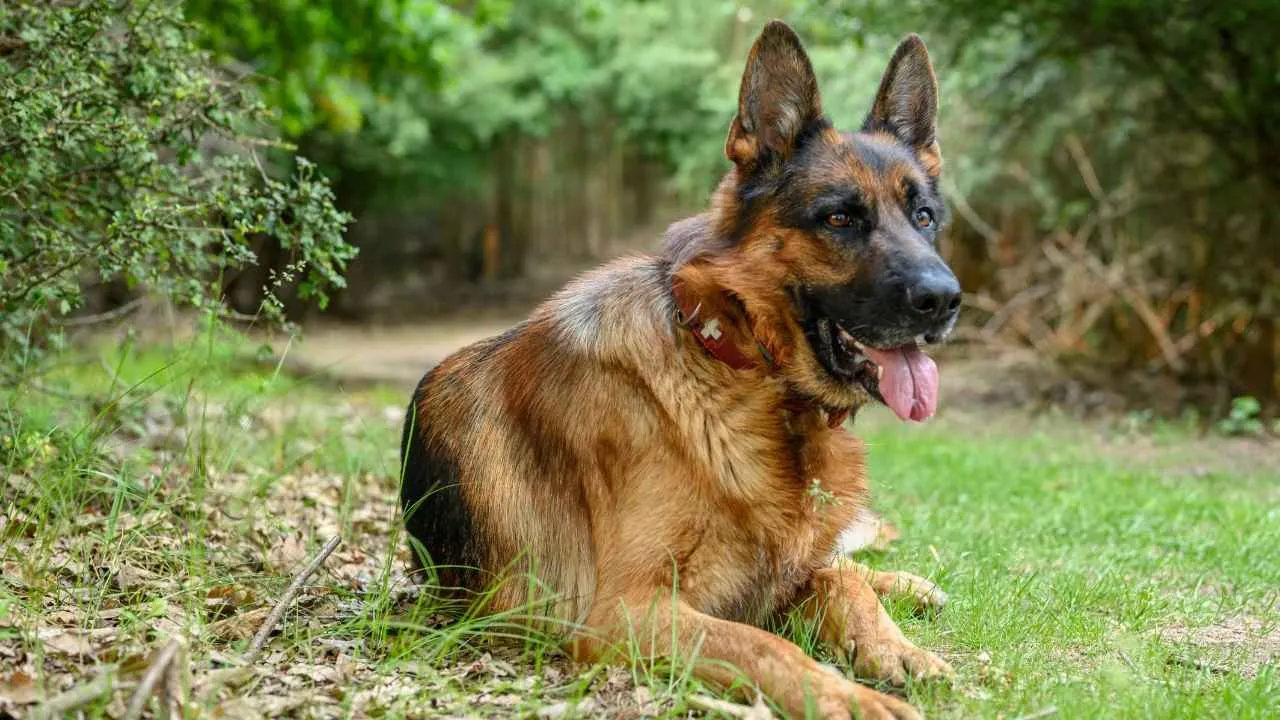
Few dog breeds exemplify a balance of power, intelligence, and unwavering dedication quite like the German Shepherd dog.
These dogs were originally bred for herding, which gave them strong loyalty and a natural instinct to protect their flock or family. They’re smart and quick to learn commands, and their athletic build helps them tackle challenges with confidence.
These fearless protectors have become essential assets in police and military working dogs. German Shepherds are naturally suited to high-pressure environments and dangerous situations.
-
Weather-Resistant Coat: According to the American Kennel Club (AKC), their dense, harsh outer coat with a soft underlayer offers durability and comfort in varying climates.
-
High-Speed Agility: The breed moves with a graceful trot that can shift into powerful bursts of speed when needed.
-
Loyal and Intelligent Companions: These incredibly loyal dogs respond well to proper training, forming strong bonds with their handlers.
2. Rottweiler
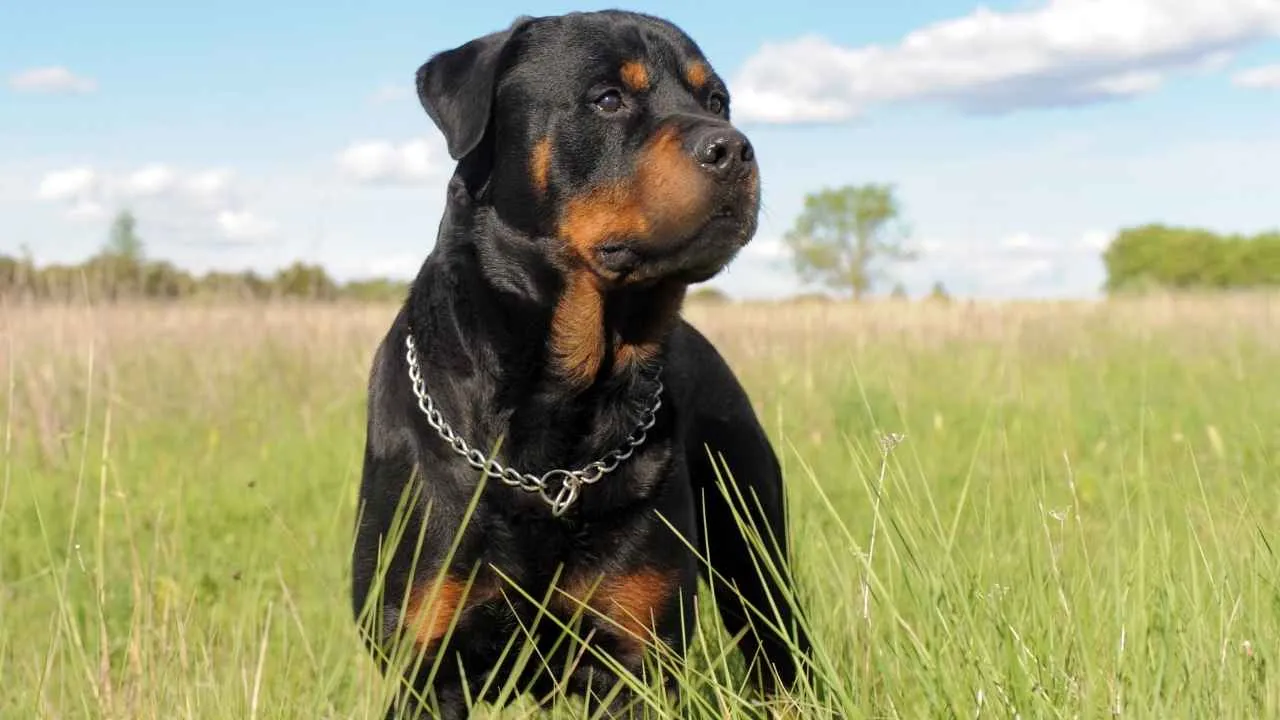
Among the most recognizable brave dog breeds, the Rottweiler carries a legacy as one of the original drover dogs, used by Roman legions to drive cattle and guard encampments.
Today, their reputation extends beyond strength, with many Rottweilers serving as effective therapy dogs, trusted in settings where their calm presence and loyal and protective nature can be truly healing.
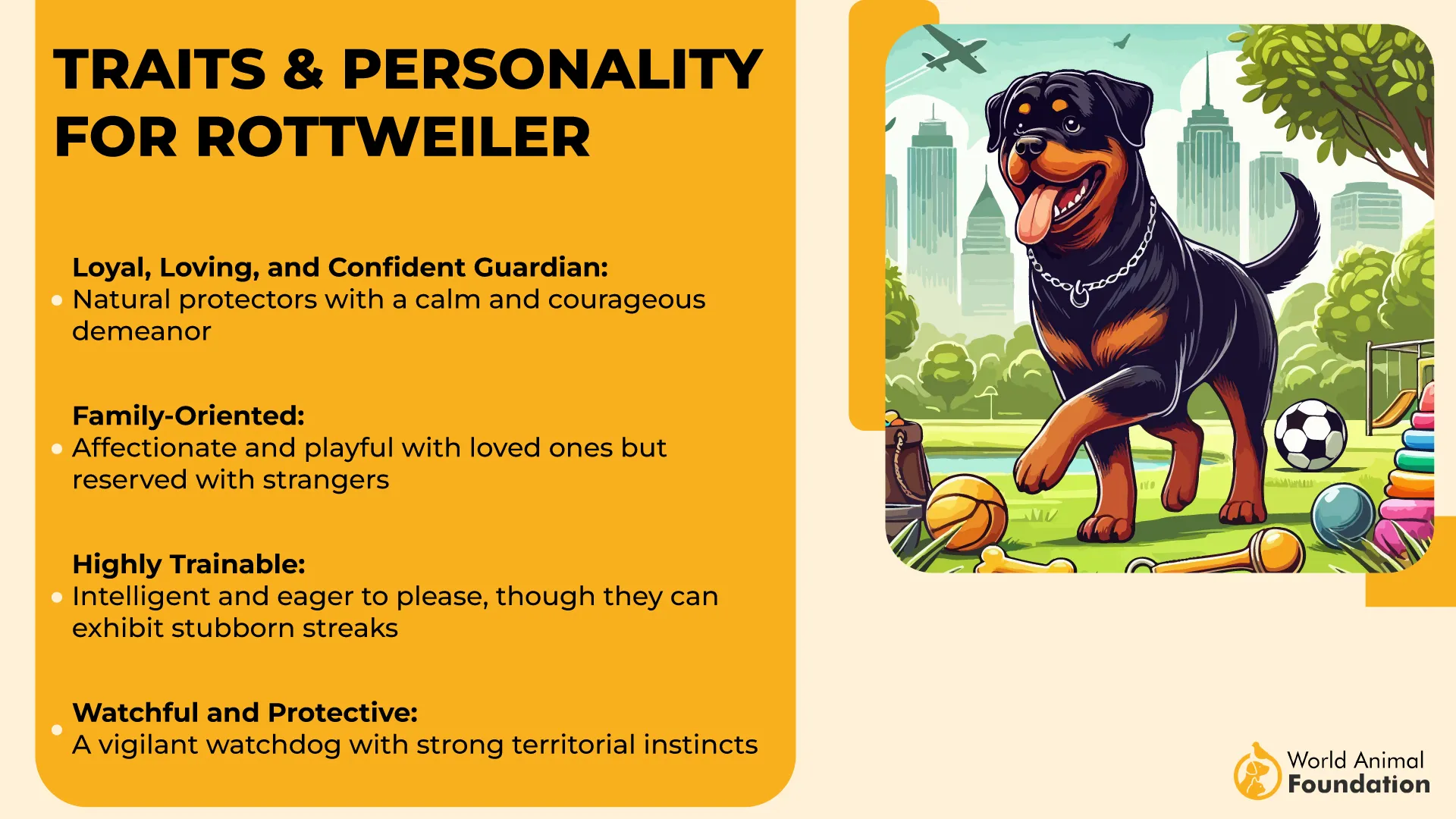
Rottweilers are known for their confident and self-assured nature. They aren’t overly friendly with strangers, but they’re not aggressive without reason. Their calm, steady confidence and protective instincts are what make them known for their bravery.
-
Distinctive Appearance: Strongly built with a short black coat and tan accents on key body points, they are both powerful and sleek.
-
Eye Contact Communicators: Rottweilers often maintain steady eye contact, a reflection of their fearless nature and desire to bond.
-
Training is Critical: To ensure they remain excellent family dogs, consistent socialization is vital for peaceful coexistence with other animals and people.
3. Doberman Pinscher
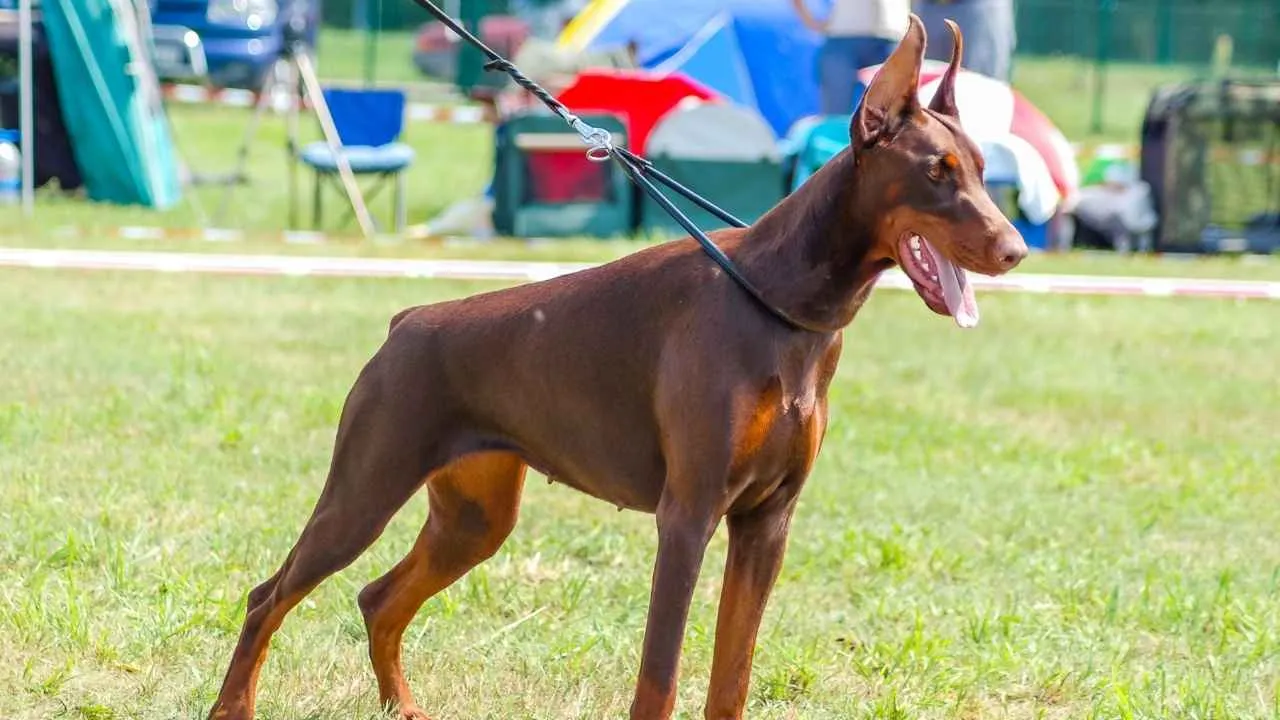
The Doberman Pinscher was born out of necessity—originally bred by a German tax collector named Louis Dobermann in the late 1800s to serve as a loyal companion and protector during collections.
Today, Dobermans remain one of the most respected guard dogs in the world, known for their alertness, power, and fearless attitude.
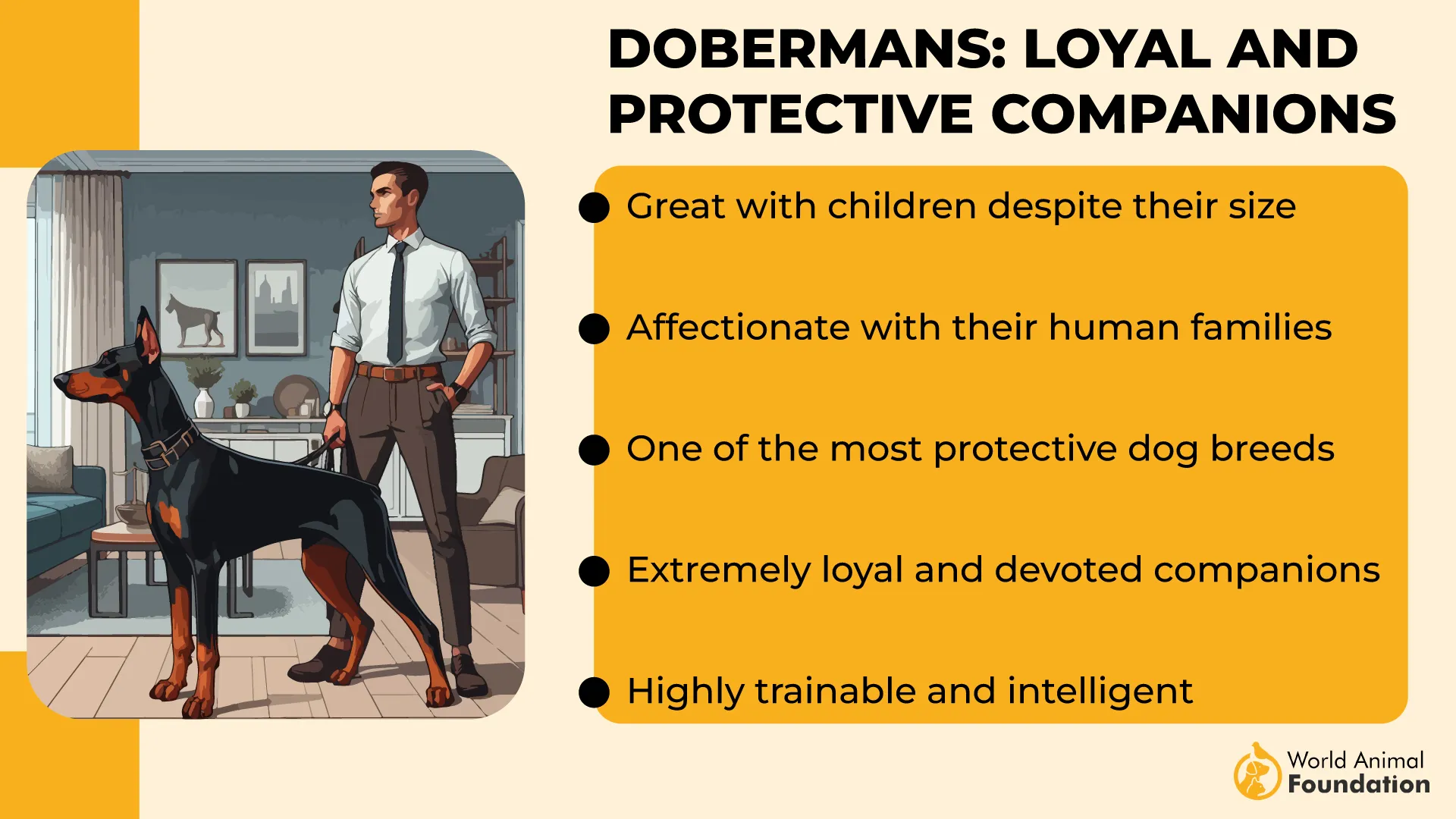
Their strong, athletic build gives them an impressive and protective look. Their short coat shows off their muscles, adding to their powerful, intimidating appearance.
-
Highly Trainable and Intelligent: Their sharp minds and drive make them highly trainable for roles in police and military, home security, and competitive obedience.
-
Athletic and Agile: According to WebMD, built with strong jaws and long legs, their body supports high-speed chases and energetic play.
-
Playful and Energetic: Dobermans need plenty of daily activity—games like fetch and tug-of-war help release their boundless energy.
4. Bullmastiff
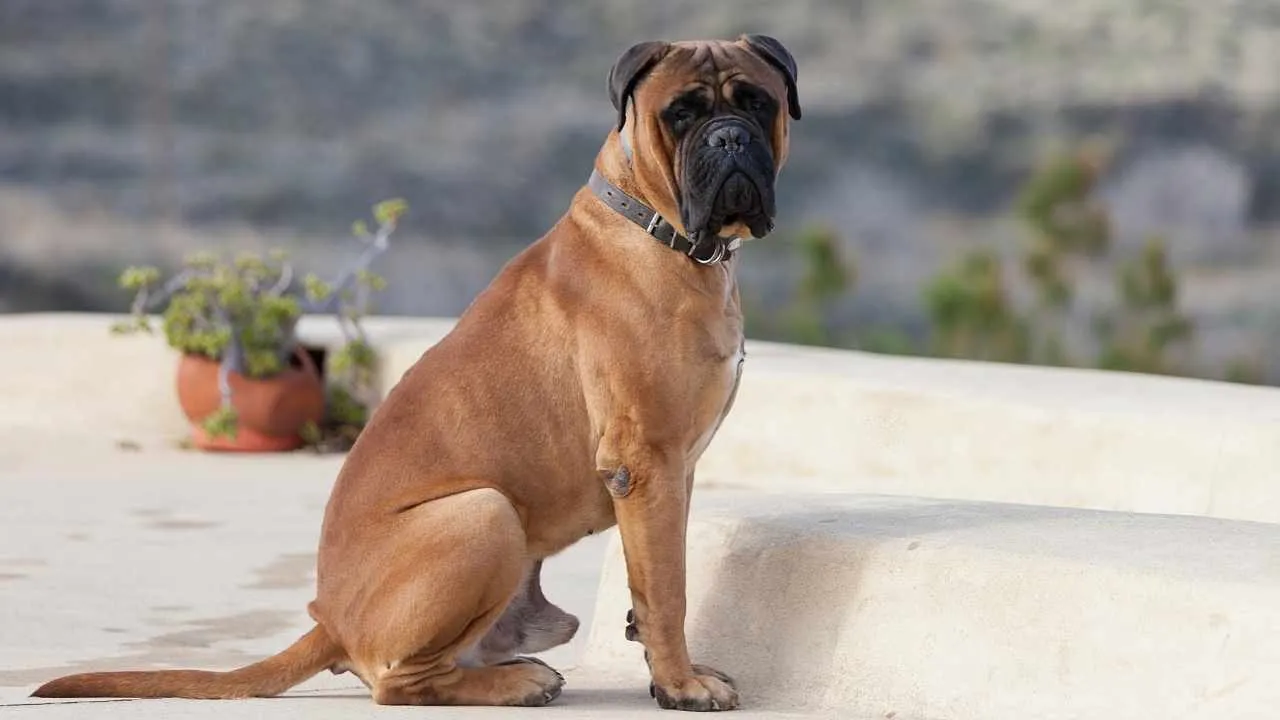
The Bullmastiff is the embodiment of quiet strength—a gentle giant bred in Great Britain to protect estates from poachers. Unlike some guard dogs, this breed doesn’t rely on barking to make a point.
Instead, their calm demeanor and deliberate responses make them one of the most effective protectors for those seeking both power and peace in a companion.
Their brave nature, along with their large size and strength, makes them naturally protective of their home and loved ones. They’re loving with family but cautious around strangers, and they’re quick to alert their owners to anything suspicious.
-
Distinctive Appearance: Features like a deep muzzle, wrinkled face, and broad head give them a noble and commanding presence.
-
Rich Coat Colors: Their short, dense coats come in bold shades like brindle, fawn, and red—easy to maintain yet striking.
-
Reliable: Despite their size, they are surprisingly agile and reliable in dangerous situations, using their presence and intuition to protect rather than provoke.
5. Belgian Malinois
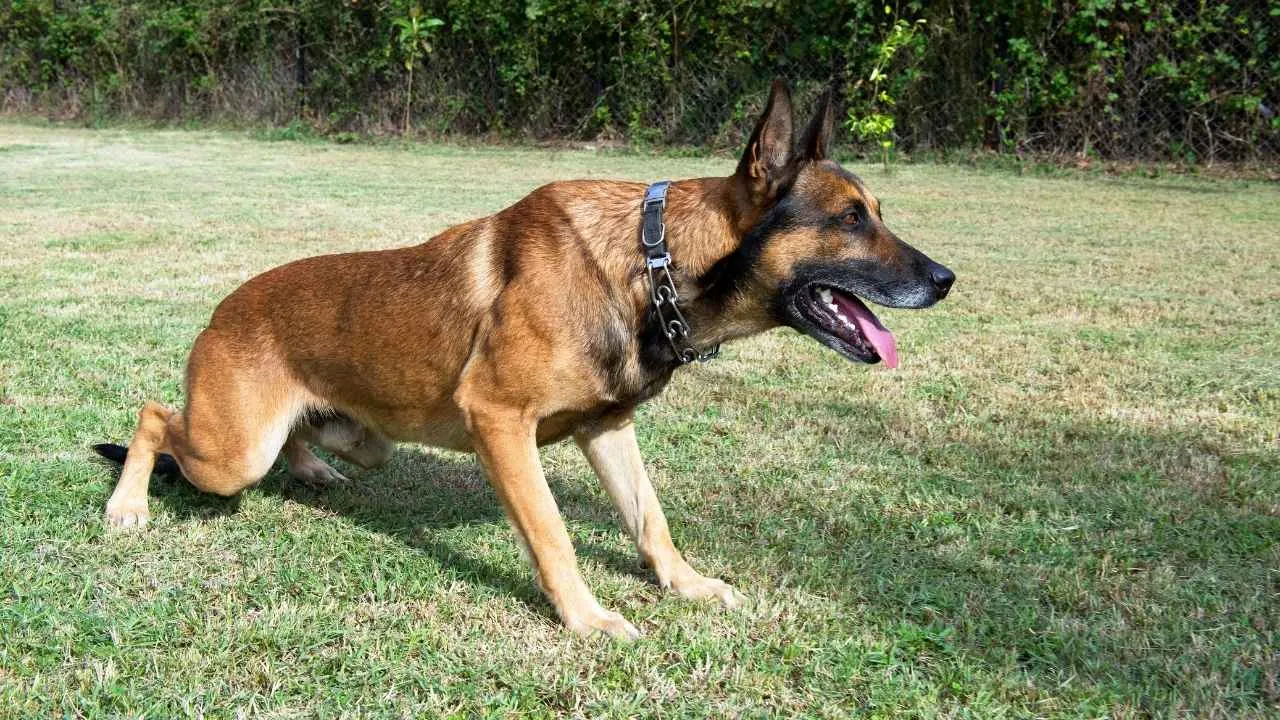
The Belgian Malinois stands out for its unmatched work ethic, focus, and boldness. Originally bred for herding, these dogs have become modern legends in military forces.
Selective breeding for jobs like herding, guarding, and detection has strengthened their bravery. Their loyalty and close bond with their handlers make them fearless, ready to protect their loved ones even in tough situations.
This intelligent breed is not ideal for first-time dog owners. Their boundless energy and need for stimulation mean they require proper training and consistent challenges to stay mentally and physically sharp.
-
Fearless in Action: Known to skydive with handlers, their courage in high-risk situations is nothing short of heroic.
-
Highly Adaptable: With the right environment and structure, they adjust well to city or country life, provided they get plenty of exercise.
-
Built for Performance: Agile and focused, their athleticism makes them top-tier working dogs in every sense.
6. Staffordshire Bull Terrier
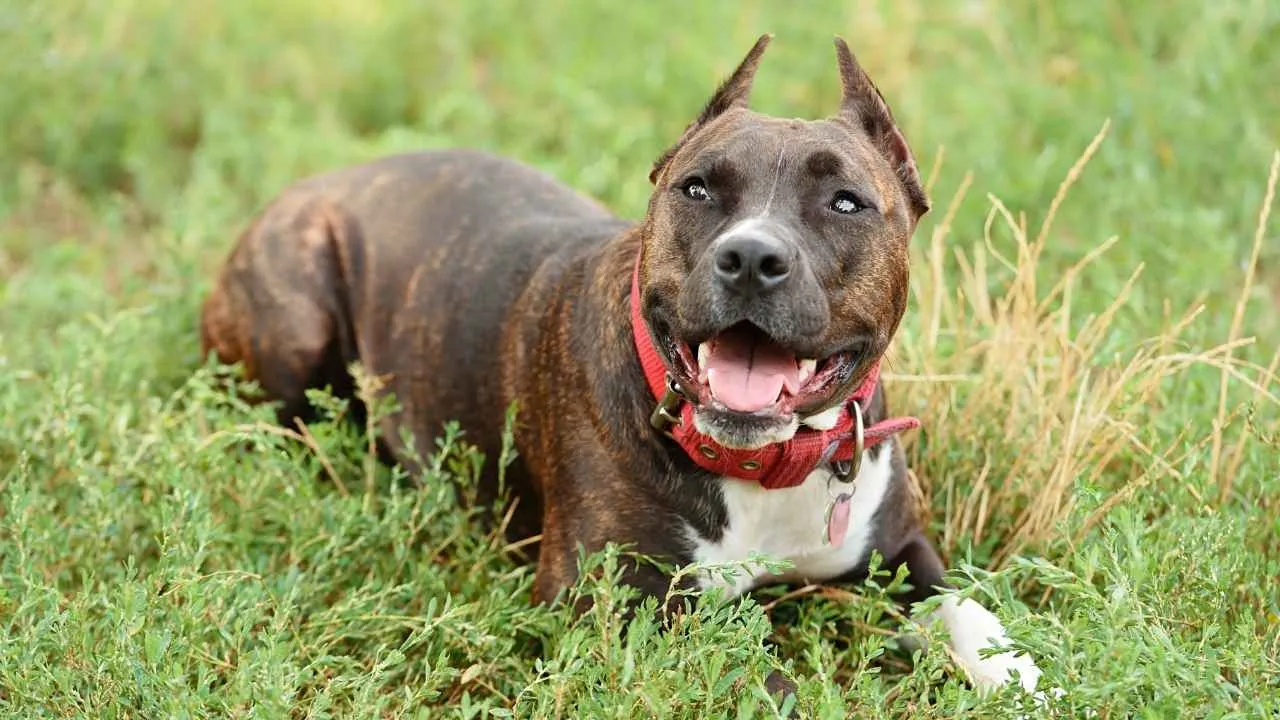
The Staffordshire Bull Terrier, often referred to as a “bully breed,” is a dog with a history as complex as it is fascinating. Originally bred for bull baiting and other harsh sports, the modern Staffie has left that past behind and now shines as a loyal, loving family pet with a fearless attitude and huge heart.
Their fighting history gave them a strong sense of “gameness” — a fearless, determined spirit and readiness to face danger no matter the odds. While today’s breeders focus on friendly, stable temperaments, the breed still carries the courage and boldness of its past.
-
Brave and Loyal Nature: With a courageous temperament, these dogs are known for their unwavering bravery and affection toward family members.
-
Quiet Confidence: According to PDSA, unlike many guard dogs, Staffies are usually calm and don’t bark much, which makes them ideal for family life in quieter neighborhoods.
-
Responsive to Positive Training: They thrive when trained with kindness, patience, and consistency, building trust and encouraging their protective instincts.
7. Cane Corso
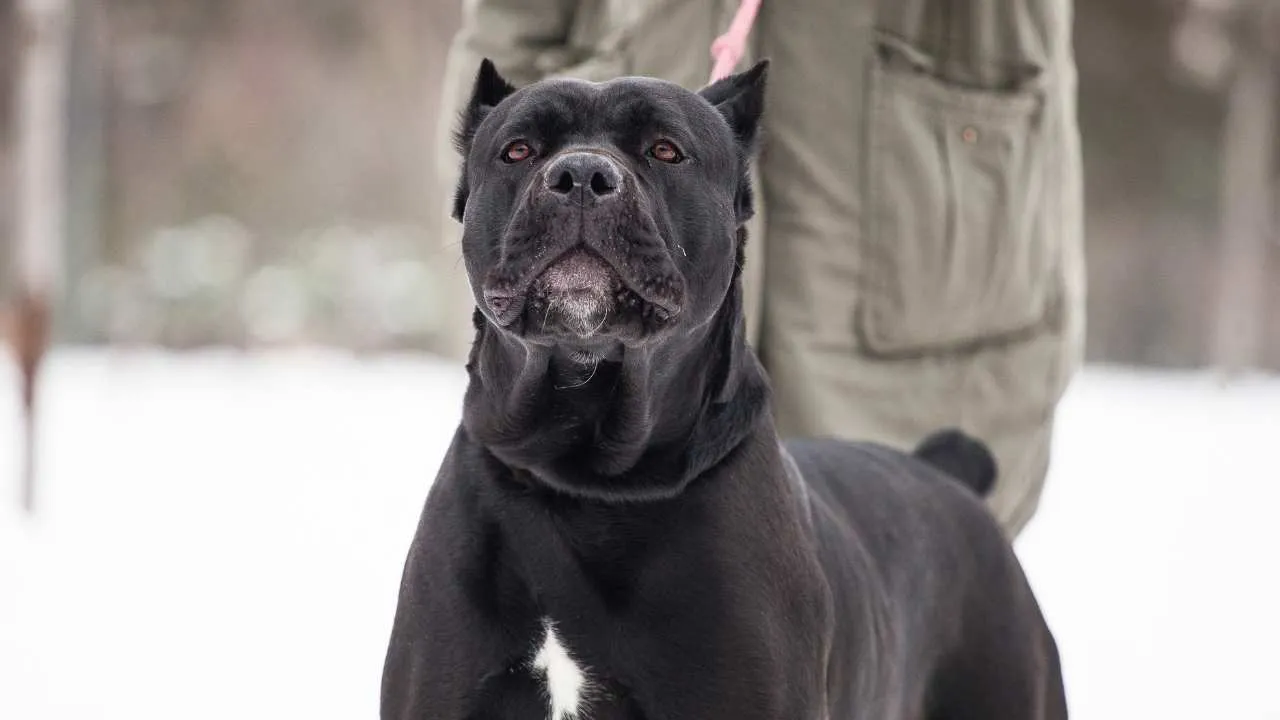
The Cane Corso, with its commanding presence and strong physique, is one of the most fearless dog breeds, still living up to its ancient roots.
Hailing from Ancient Greece and later refined in Italy, its name comes from the Latin “Cohors,” meaning guardian or protector—a role this breed has embraced for centuries.
They form strong bonds with their families and are deeply loyal, which drives their desire to protect their loved ones. This loyalty makes them feel responsible for keeping their family safe.
-
Strong and Structured Build: Broad, well-muscled, and reassuringly sturdy, they project both power and control, making them effective protectors in dangerous situations.
-
Distinct Double Coat: With both an outer and inner coat, the Cane Corso is built for both protection and endurance in all seasons.
-
Form Strong Bonds: With early socialization and proper training, they become affectionate and loyal family members who are both calm and confident.
Conclusion
Courage in dogs isn’t just about boldness—it’s about loyalty, connection, and the instinct to protect. Whether bred for guarding, herding, or working alongside humans in demanding roles, these breeds show that bravery comes in many forms. Some are naturally reserved yet confident, while others meet the world head-on with a fearless spark.
Choosing a brave dog means more than picking a powerful breed. It means understanding their needs for exercise, mental stimulation, and early socialization. With the right support, they grow into confident, well-adjusted dogs that thrive in both active homes and quiet routines.


